Key characteristics of design of the 19th and 20th century reflect the industrial nature of the period, the tension between individualised requirements and mass production in the growing consumer market. Design became an integrating factor of modern and postmodern culture, as it combined new advancements and technologies with art. From the outset, it has aimed to refine both production and taste. Today, design ever more prominently affects not just tangible objects but also information and virtual worlds, as one of the mainstays of the flourishing “creative industries”.
New demands for domestic furnishing and equipment fuelled the development of design in the 19th century. Emphasis was placed on mobility, efficiency of space, universality, and ease of use, besides the basic requirement of functionality. The creation and continuity of functional forms can be observed in the development of specific types of everyday objects (including tools and devices), which are variants of responses to human needs. They also document the difficult path from innovative draft design to mass production or the changing relations between handicraft and machine work.
Another equally important phenomenon of modernity is the role of light, which is essential to the lifestyle of modern man and to design itself. This introduces the question of how objects and images speak through light. It hints at light’s power to affect the perception of shapes, surfaces, and spaces, to reveal or conceal mass. It highlights the indisputable importance of light as a modern means of expression.
More text next to the photos
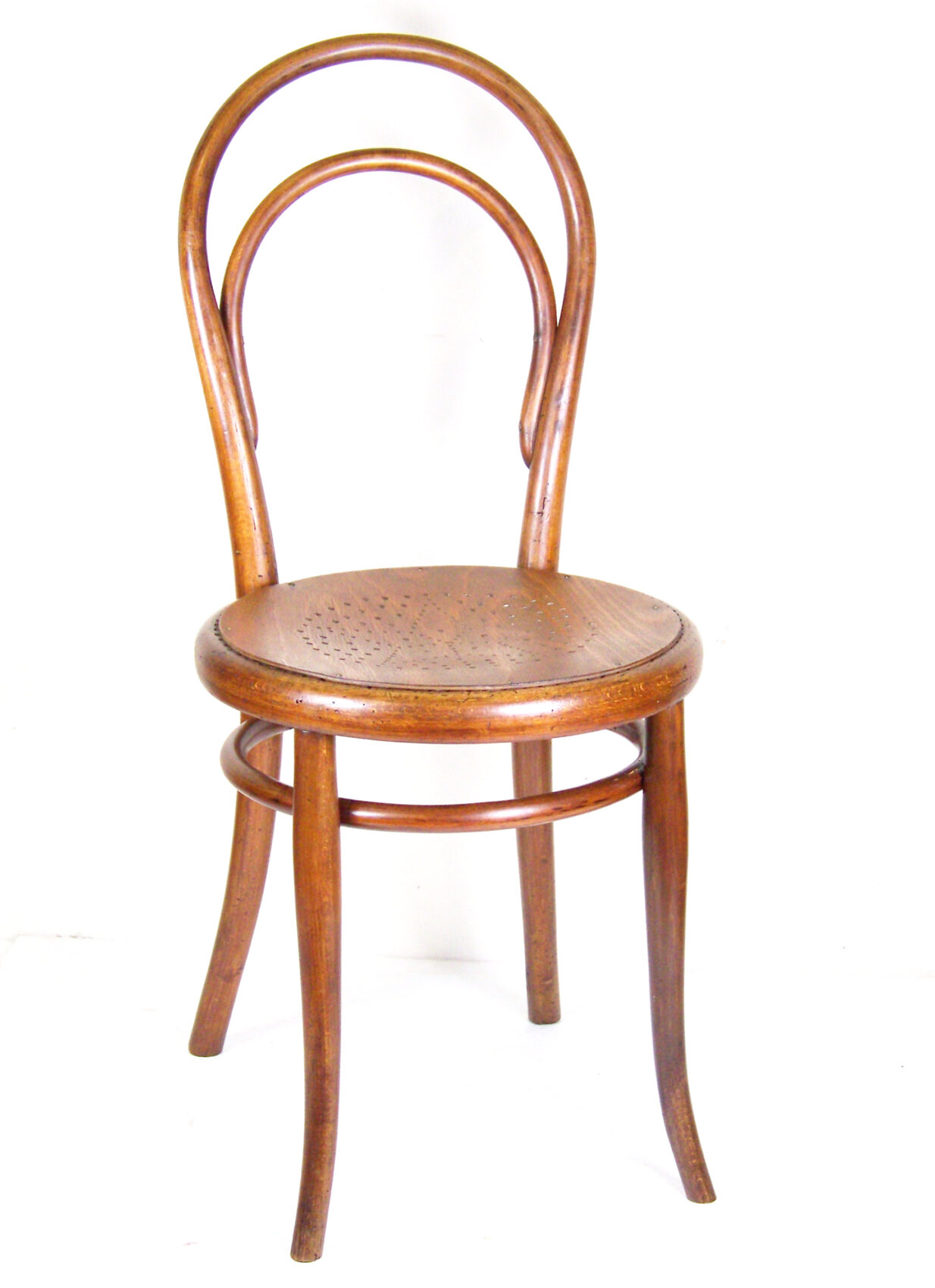
Thonet No. 14
The bentwood technology marked a decisive point in the evolution of lightweight, easily movable furniture. Initially, thin wooden slats and rods were moulded to shape that required additional glueing. In the mid-19th century, the Gebrüder Thonet company devised a technique of steam-bending lengths of solid beech, which simplified the manufacturing and assembly from serially-made components. A radical turn towards mass production is embodied in the legendary No. 14 Chair that became the most widely-sold furniture model in the history of furniture-making. The chair exhibited a low weight, high strength and flexibility.
“Chair No. 14”, last quarter of 19th century. Gebrüder Thonet, Moravia. Bent beechwood, steam-pressed seat
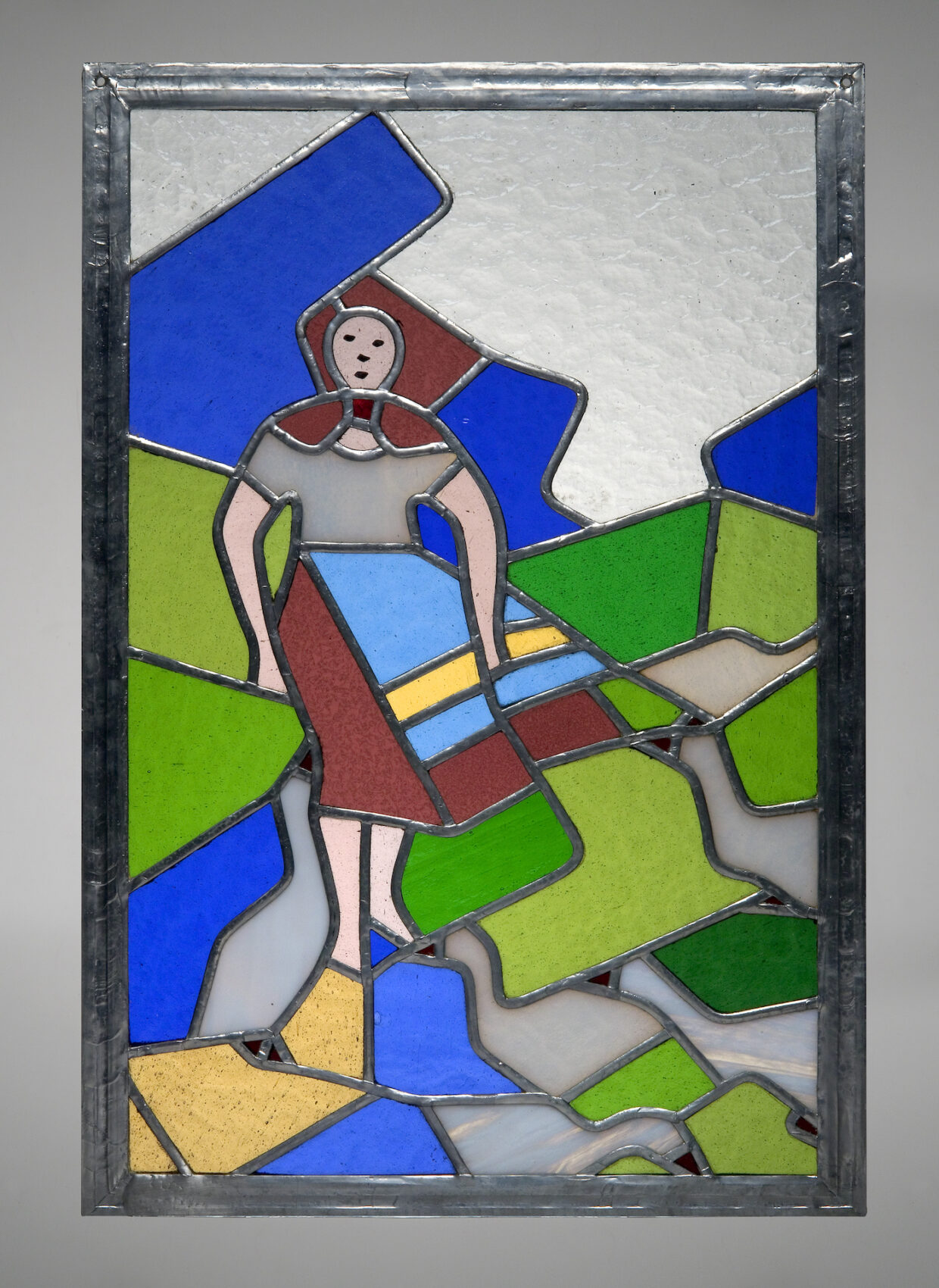
Václav Špála
From the 19th century, design was widely employed in new industrial technologies, while being enriched with repeated returns to traditional craftsmanship. Handicrafts were put in contrast to the monotony of mechanical production and celebrated as the creative accomplishment of human skills that imprinted material with new form. The re-embracement of artisanry tended to go hand in hand with an emphasis on national traditions, as was the case in this country after the establishment of the post-World War I Czechoslovak Republic and again following World War II. In Bohemia, specific traditional crafts continued to be practiced, such as lace-making (bobbin and needlepoint lace), tapestry-weaving and the challenging art of hand-cut glass.
“Gooseherd” stained glass panel, 1924–1926, Václav Špála (1885–1946) for the house of architect František Kavalír in Prague 5. Glass, enamel-painted pieces fitted into lead cames
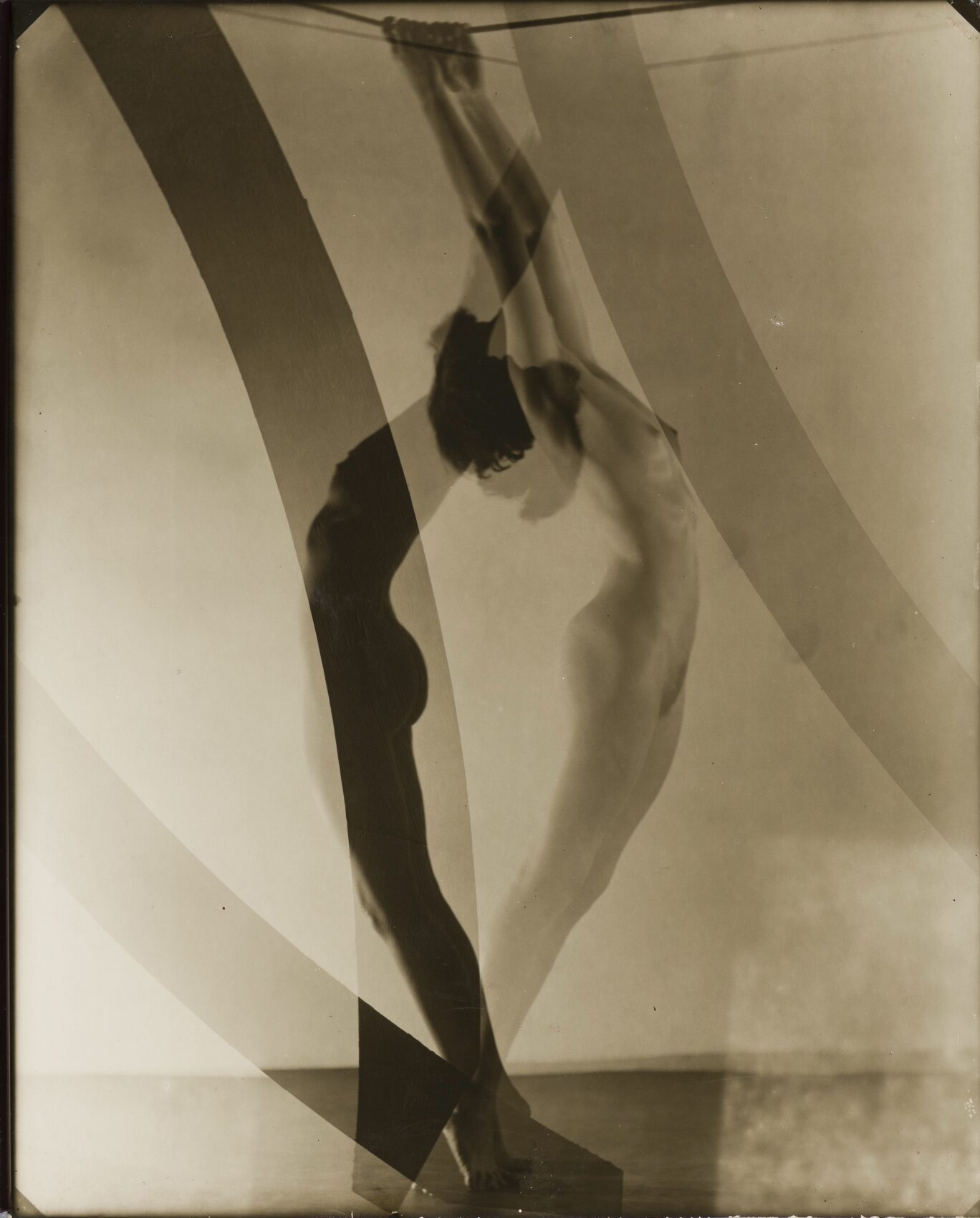
František Drtikol
In the 19th century and particularly during the 20th century, the light-created image underwent radical transformation. Photography, cinematography and eventually other new media as well decisively altered the visual world and lifestyle of modern man. Light also formed a captivating theme in technical imagery. This is well documented in the works of the foremost exponents of Czech photography, such as František Drtikol and Josef Sudek, and the pioneers of the country’s avant-garde abstract photography represented by Jaromír Funke and Jaroslav Rössler. In connection with design, the advertising and promotional role of photography also deserves mention as it contributed to the emergence of the innovative visual language of advertisement, through which top design and fashion received widespread popularity.
František Drtikol (1883–1961): Untitled, c. 1930. Silver bromide print, double exposure
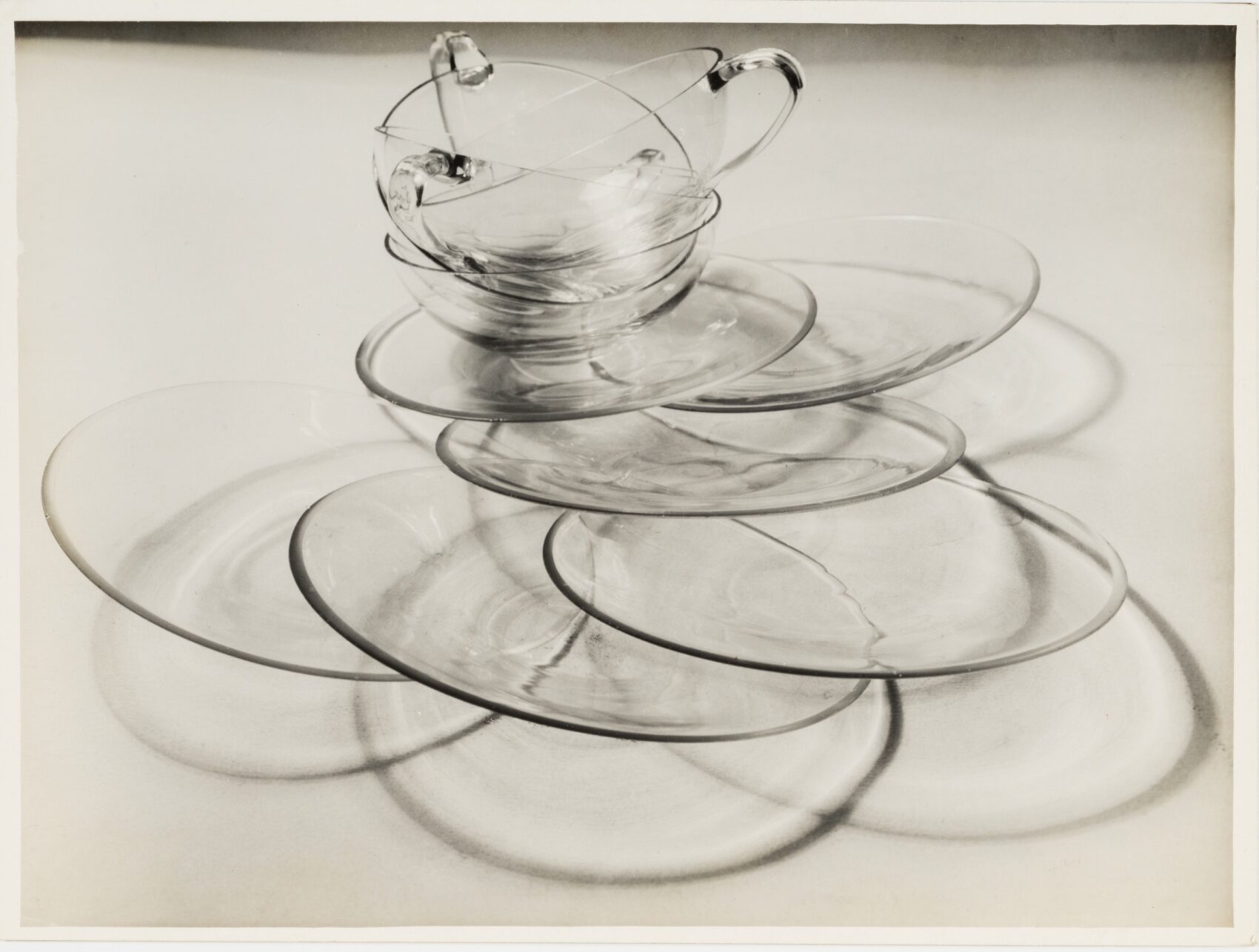
Josef Sudek
In the 19th century and particularly during the 20th century, the light-created image underwent radical transformation. Photography, cinematography and eventually other new media as well decisively altered the visual world and lifestyle of modern man. Light also formed a captivating theme in technical imagery. In connection with design, the advertising and promotional role of photography also deserves mention as it contributed to the emergence of the innovative visual language of advertisement, through which top design and fashion received widespread popularity.
Josef Sudek (1896–1976): Advertisement photograph (tea service designed by Ladislav Sutnar), 1931. For Krásná jizba DP cooperative. Silver bromide print
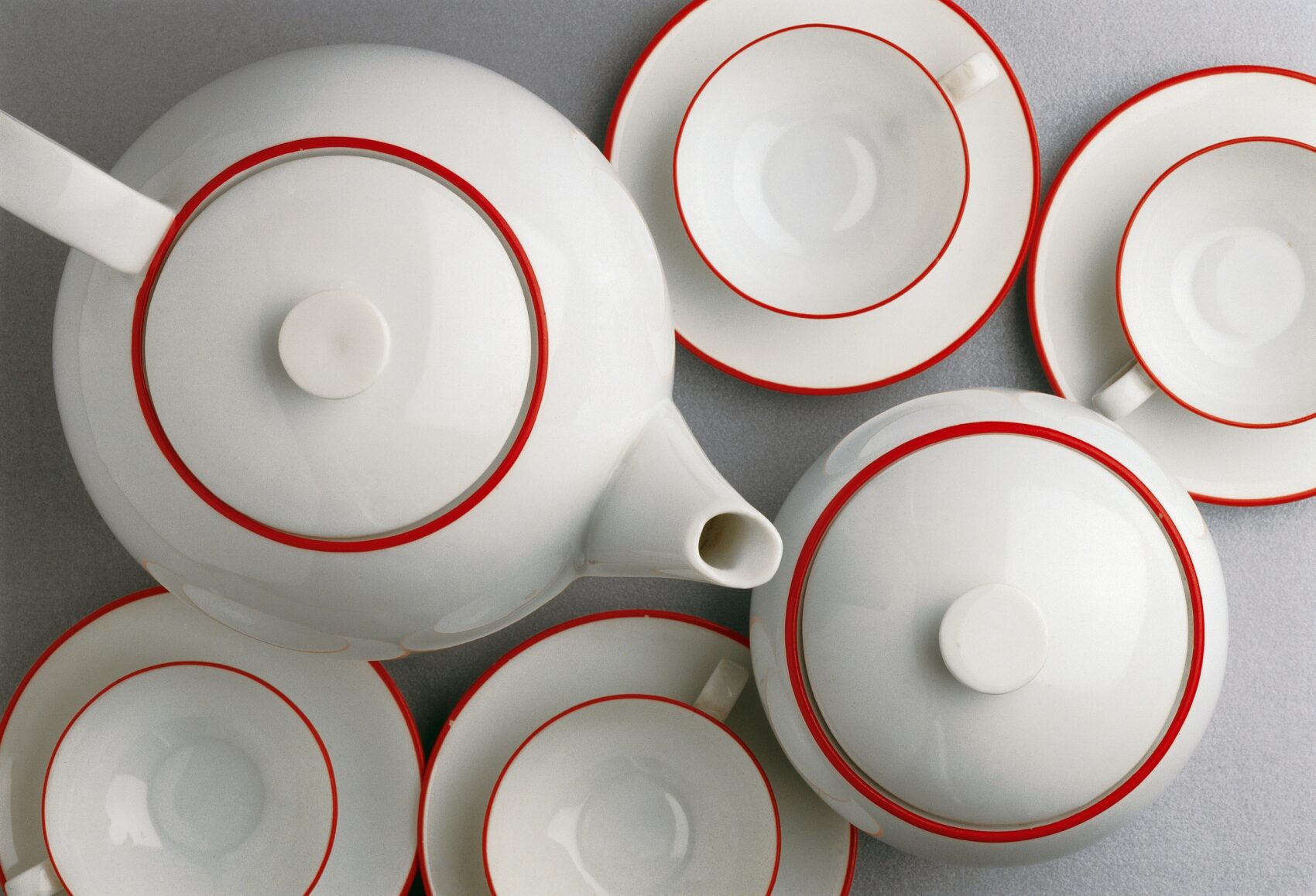
Ladislav Sutnar
The diversely talented Czech-American designer and painter Ladislav Sutnar (1897 Pilsen – 1976 New York) regarded geometry as a sacred method of design – he employed visually dynamic, yet superbly harmonious proportions in the creation of functional objects and toys, as well as in graphic and information design, exhibition installation and painting.
Ladislav Sutnar (1897–1976): Coffee and tea service (part), 1932, Epiag Karlsbad, production plant Loket (Eger), for Krásná jizba DP cooperative. Glazed porcelain, red line
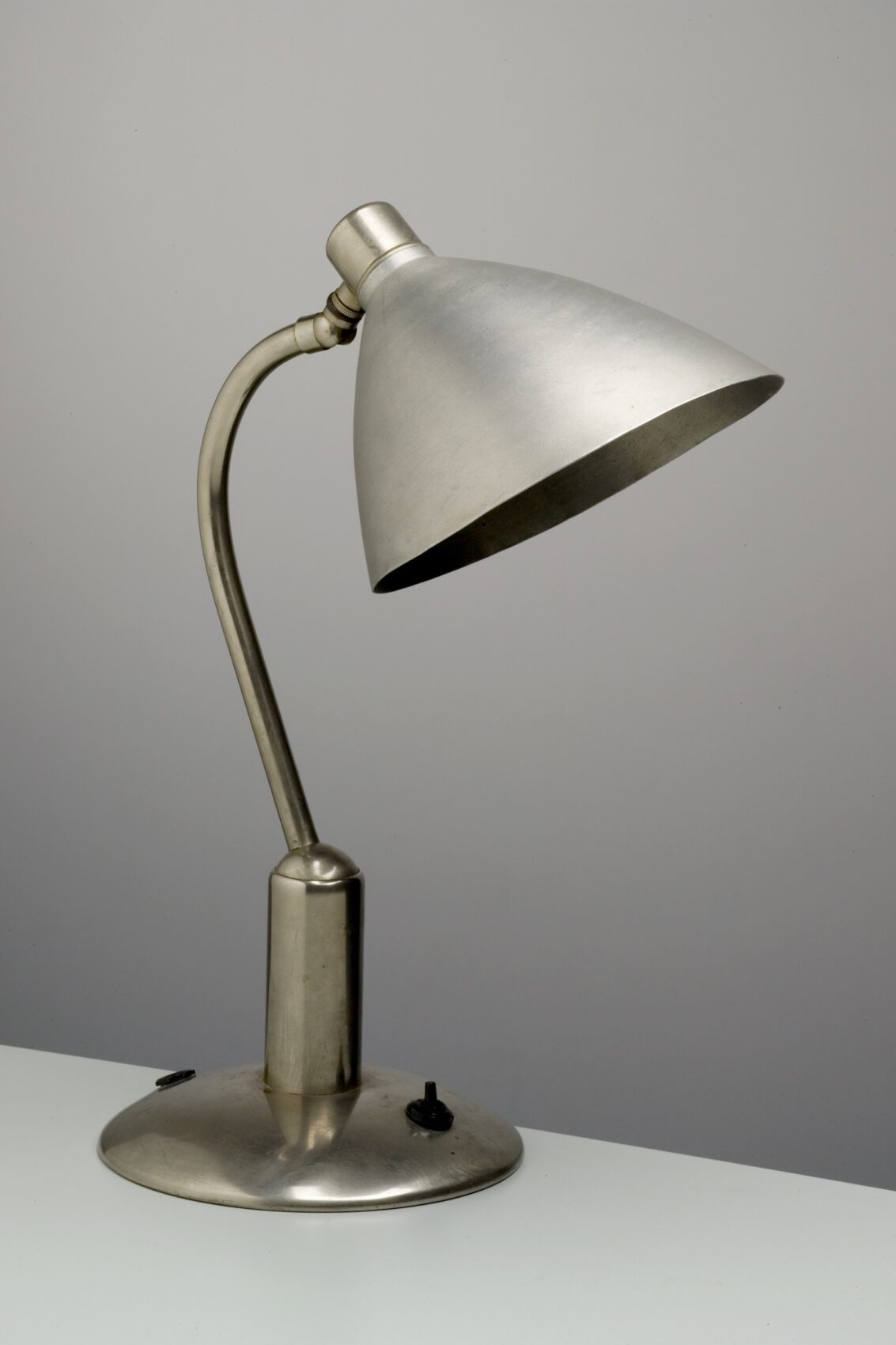
Absence of Decoration
In the course of the 1920s–1940s, Functionalism experienced conceptual and formal transformation. Yet its principal tenets remained the same, emphasizing in objects their functionality and purpose, affordability, use of high-quality materials, visible construction and absence of decoration.
IAS table lamp, No. 5972, after 1934, Jaroslav Anýž (1902–1985). Production plant Franta Anýž, Prague. Nickel-coated base metal, aluminium (shade)
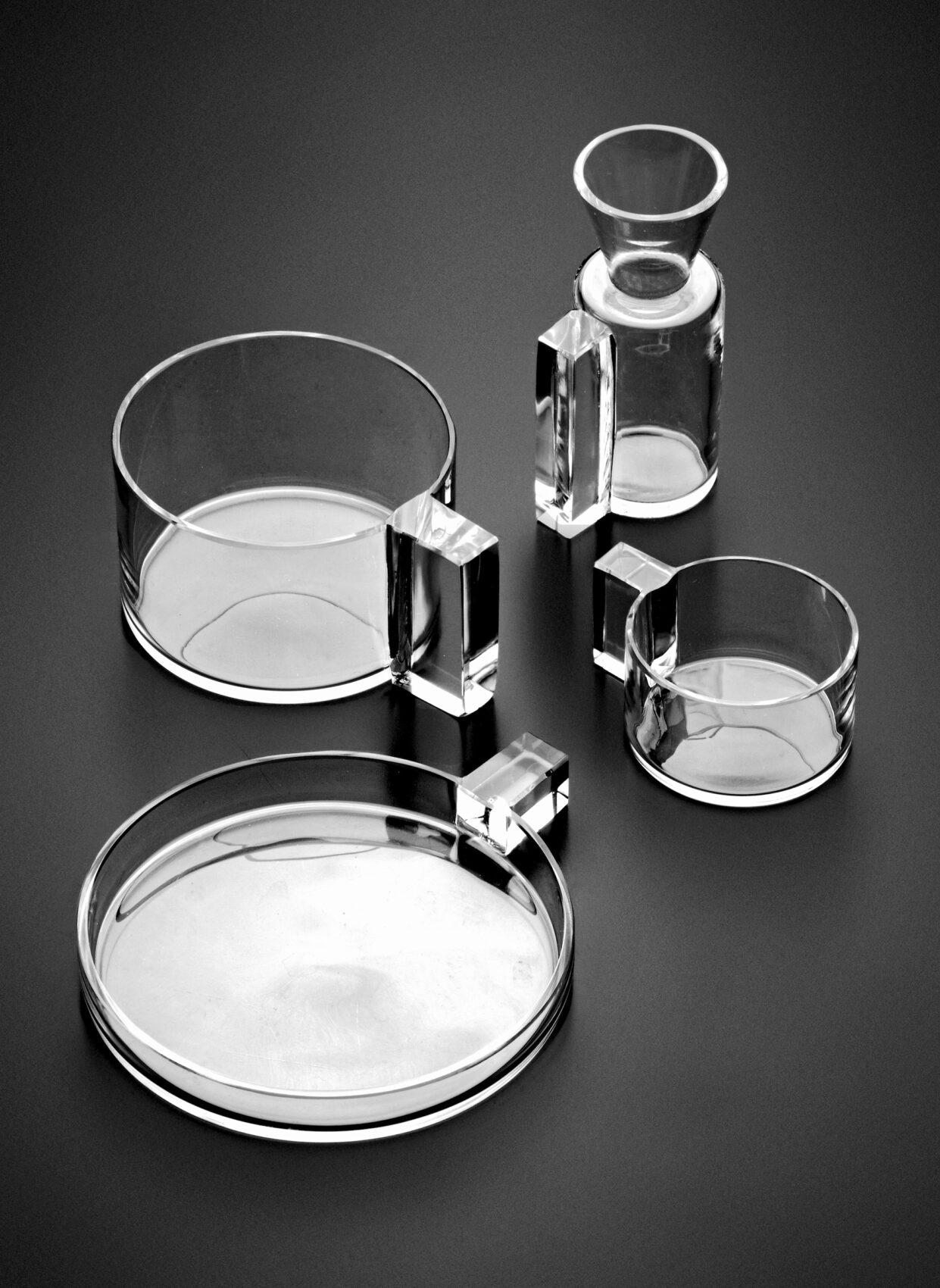
Funkcionalisms
Interior designers sought inspiration in modern technology and its simple, geometric lines and smooth volumes.
Breakfast service (part), 1936, Ludvika Smrčková (1903–1991), design 1930, Antonín Rückl & Sons glassworks, Nižbor, Bohemia, Cut glass
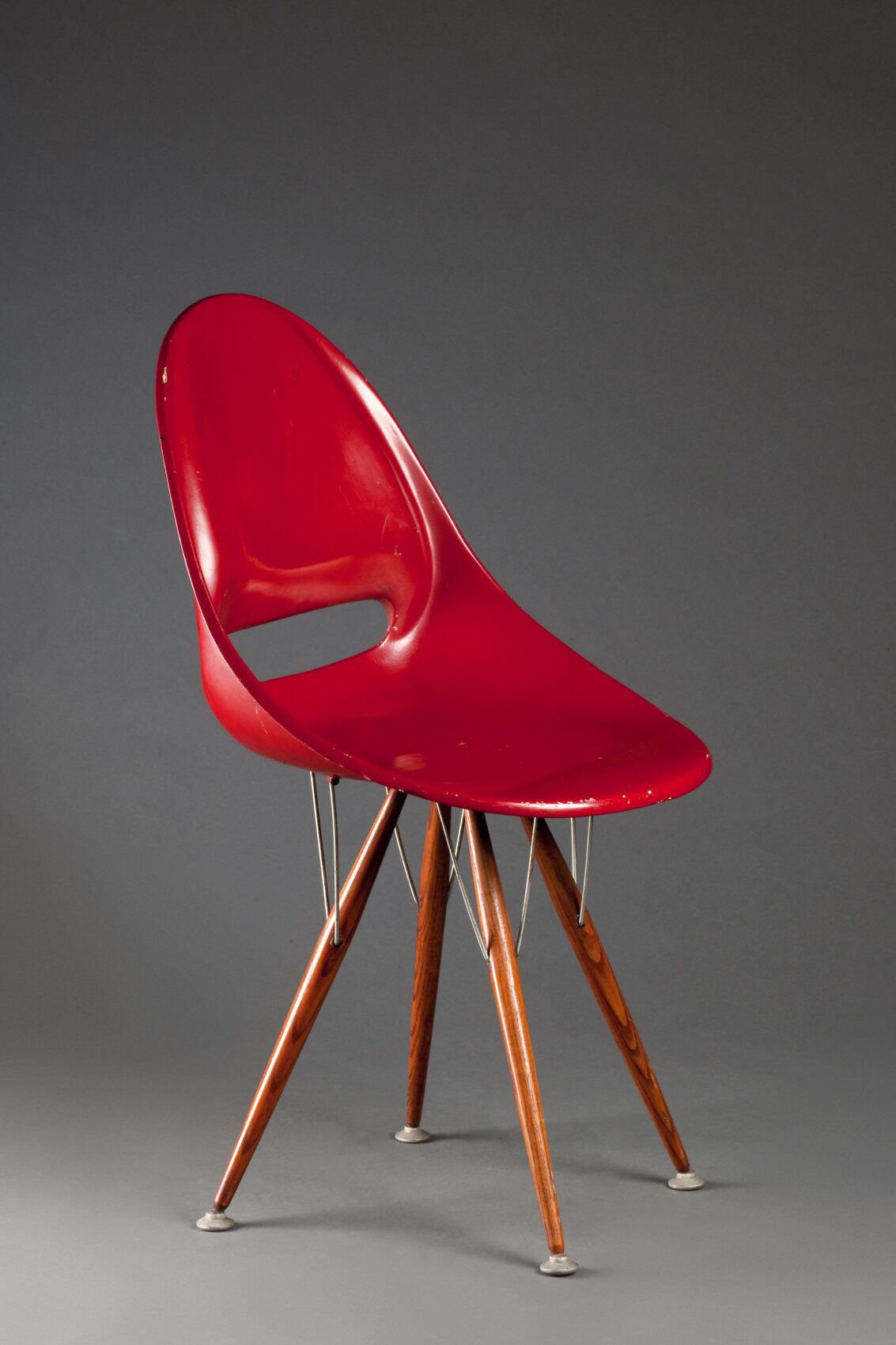
Industrial Mass Production
The rationalization, acceleration and cost reduction of industrial mass production called for the standardazation of products and their universal adaptability – a trend that also affected the manufacture of furniture and lighting fixtures. Simple functional components were made in series and subsequently assembled into modules. Typically, the modular elements consisted of removable parts, which increased the flexibility of the products and their usage in space, in keeping with the changing needs of the user. Modular furniture produced in Czechoslovakia from as early as the 1920s and later called multi-unit became ubiquitous in the apartments of mass-constructed prefab housing estates.
Chair, 1959, Miroslav Navrátil (1913–1999). Exhibited 1960 at the Milan Triennial XII. Manufactured by The Institute for Furniture Industry Development, Brno. Laminated glass, ashwood, metal elements
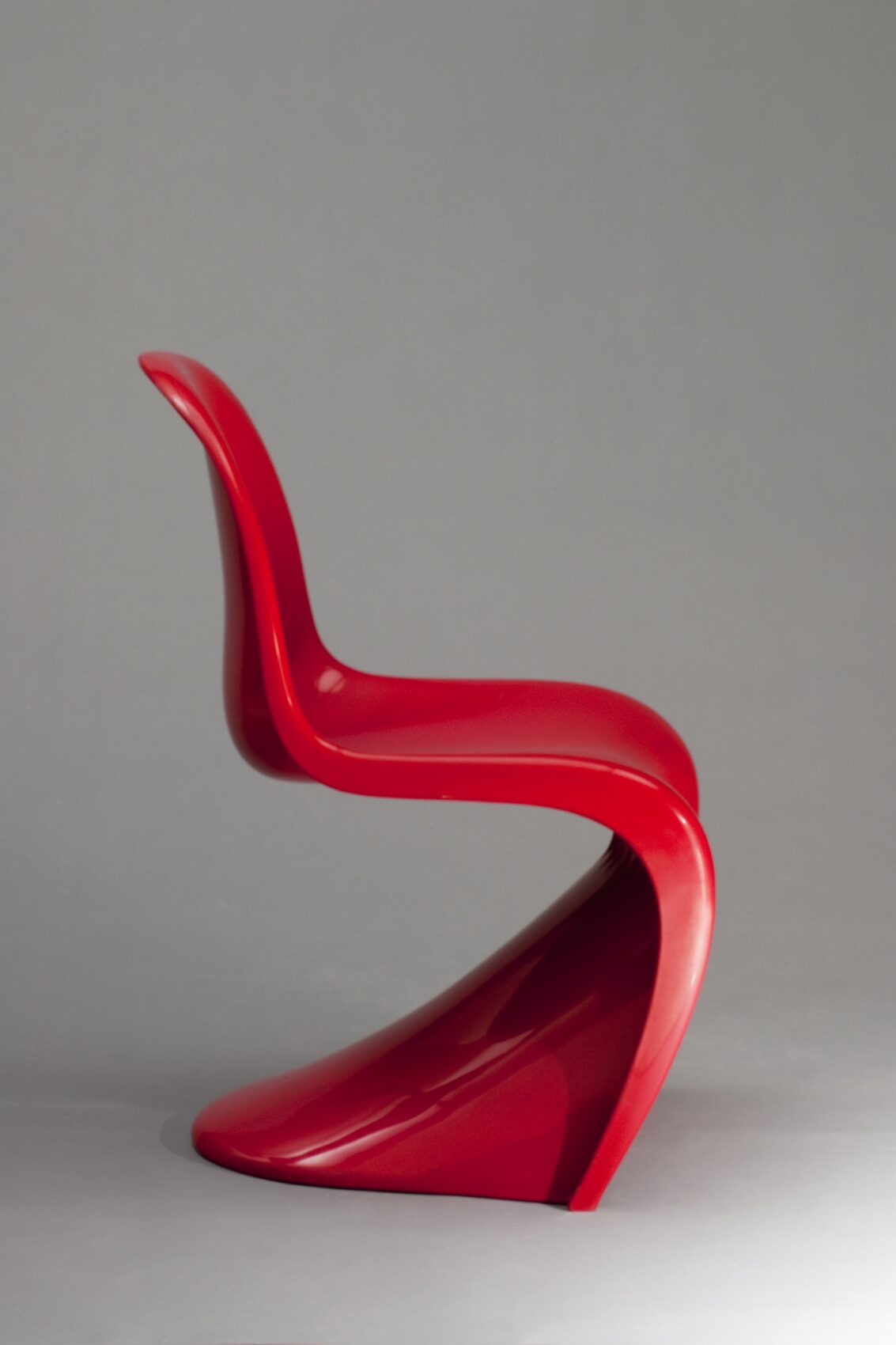
Verner Panton
The popularity of plastic and the euphoria it generated reached a peak in the 1960s, when great hopes were placed in this malleable, colourful, cheap and mass-made material. In 1972, the Museum of Decorative Arts in Prague responded to this general atmosphere by organizing the Design and Plastics exhibition. The then-curator Milena Lamarová featured in it mainly contemporary Italian design furniture and lighting. Afterwards, many of the exhibited objects, created by such famous designers as Verner Panton, Joe Colombo, Bruno Munari, Cini Boeri, Enzo Mari, Gruppo DAM, and others, became part of the museum’s collections.
Panton Chair, 1960, Verner Panton (1926–1998), Denmark, Manufactured c. 1970 by Fehlbaum, West Germany, Luran S plastic (injection-moulded polyurethane)
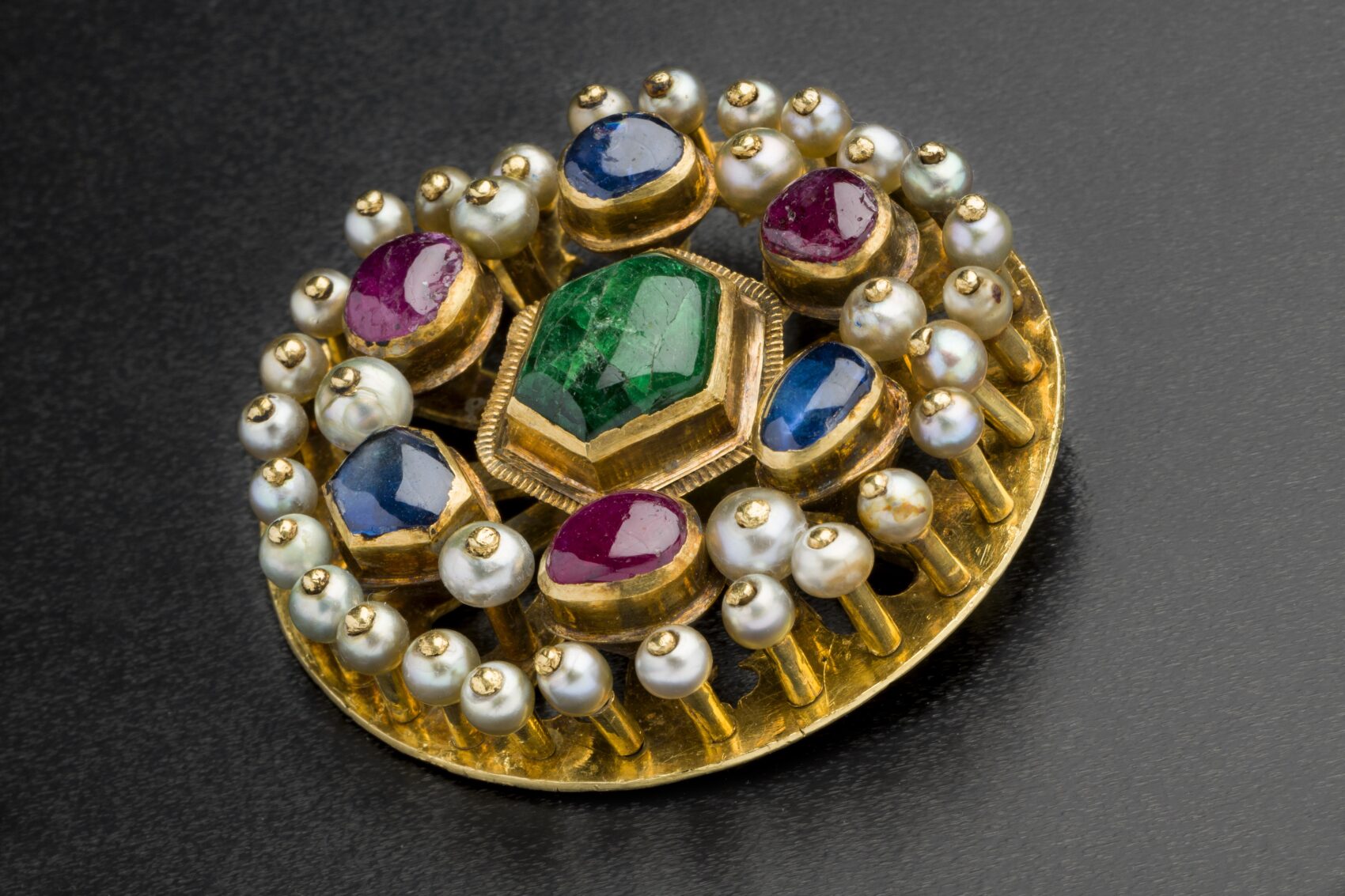
Light
The five pieces of jewellery spaning the period from the 14th to the 20th century embody a wide range of modes through which the theme of light is manifested in jewellery.
Brooch – part of the Karlštejn Treasure, 14th centure. Central Europe (Bohemia?). Gold, emerald, rubies, saphires, pearls
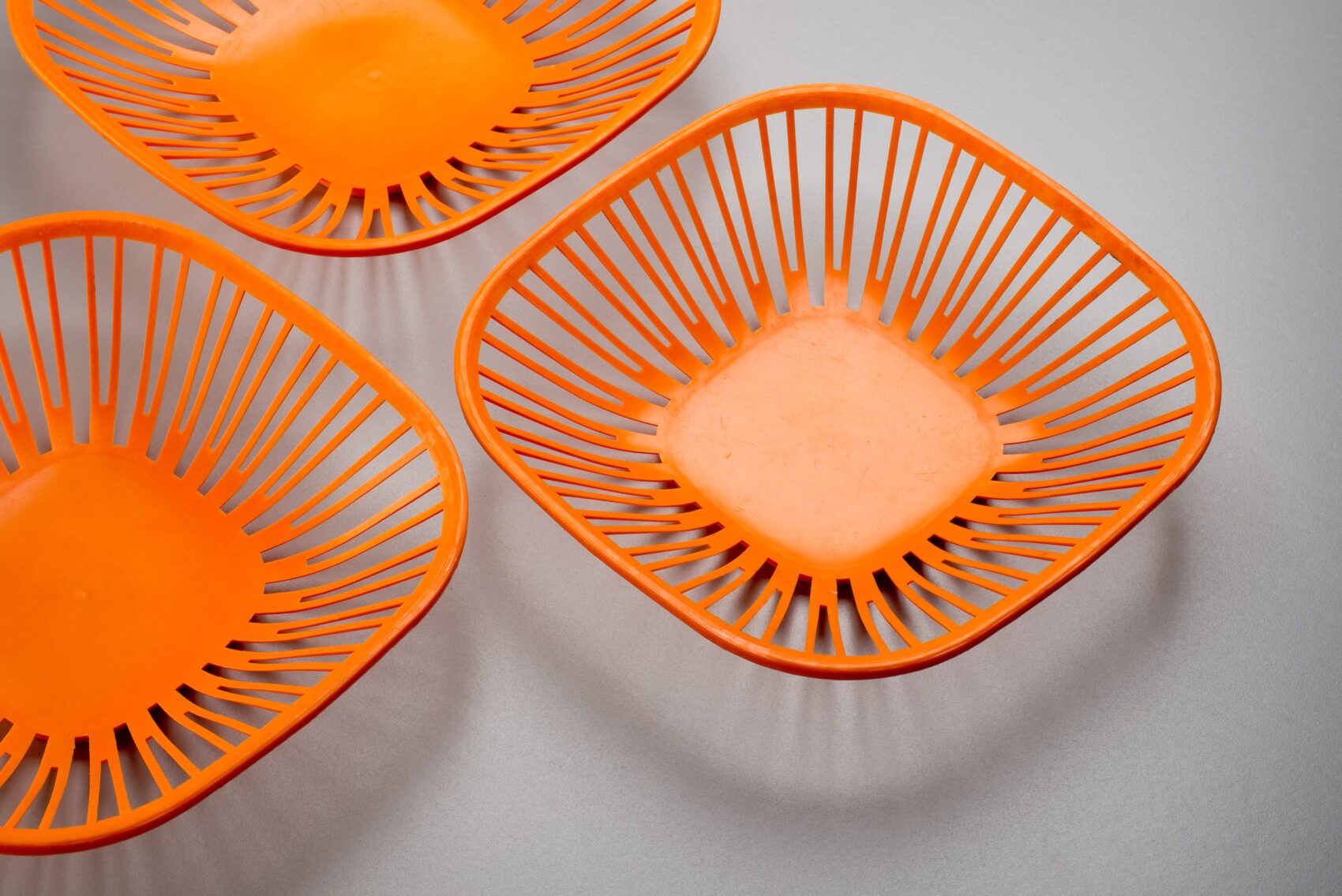
Objects for everyday use
The history of objects for everyday use has been marked by a fascinating evolution of functional forms. Their genesis cannot by explained strictly from the perspective of individual artistic creativity. Every man-made object was primarily created to tackle a specific function-related problem. Designers never start from zero; quite to the contrary, they draw on previous impulses. The history of design suggests that every original creative idea is simply a link in a connecting chain of forms, in a sequence of different solutions to the same or similar problem. New inventions interact with serial replication and variation of what has already existed before.
Bread baskets, 1960. Ivan Jakeš (born 1935). Produced by Plastimat, Jablonec nad Nisou. Polyvinylchloride

Machine and Tool Forms
Zdeněk Kovář was a pioneer designer of machine and tool forms in post-war Czechoslovakia. He drew on the innovative work of the sculptor Vincenc Makovský, his teacher at the Arts School in Zlín, and as the founder of the subject of industrial design he educated many students in that field. His organic concept of form and perfect craftsmanship were based on his excellent knowledge of the use of tools in practice. The ergonomic design of surgical instruments called for a similar approach. Based on a design competition, various items were made in 1968 in consultation with prominent Czech surgeons. These objects were intended for the Czechoslovak exhibition at the 1968 Milan Triennial XIV, where they were awarded a Gold Medal.
Surgical hook, 1968, Ivan Moucha (1938–2009). From a collection of instruments for the 1968 Milan Triennial XIV. Produced by Chirana, Nové Město na Moravě, Moravia. Chrome-plated steel
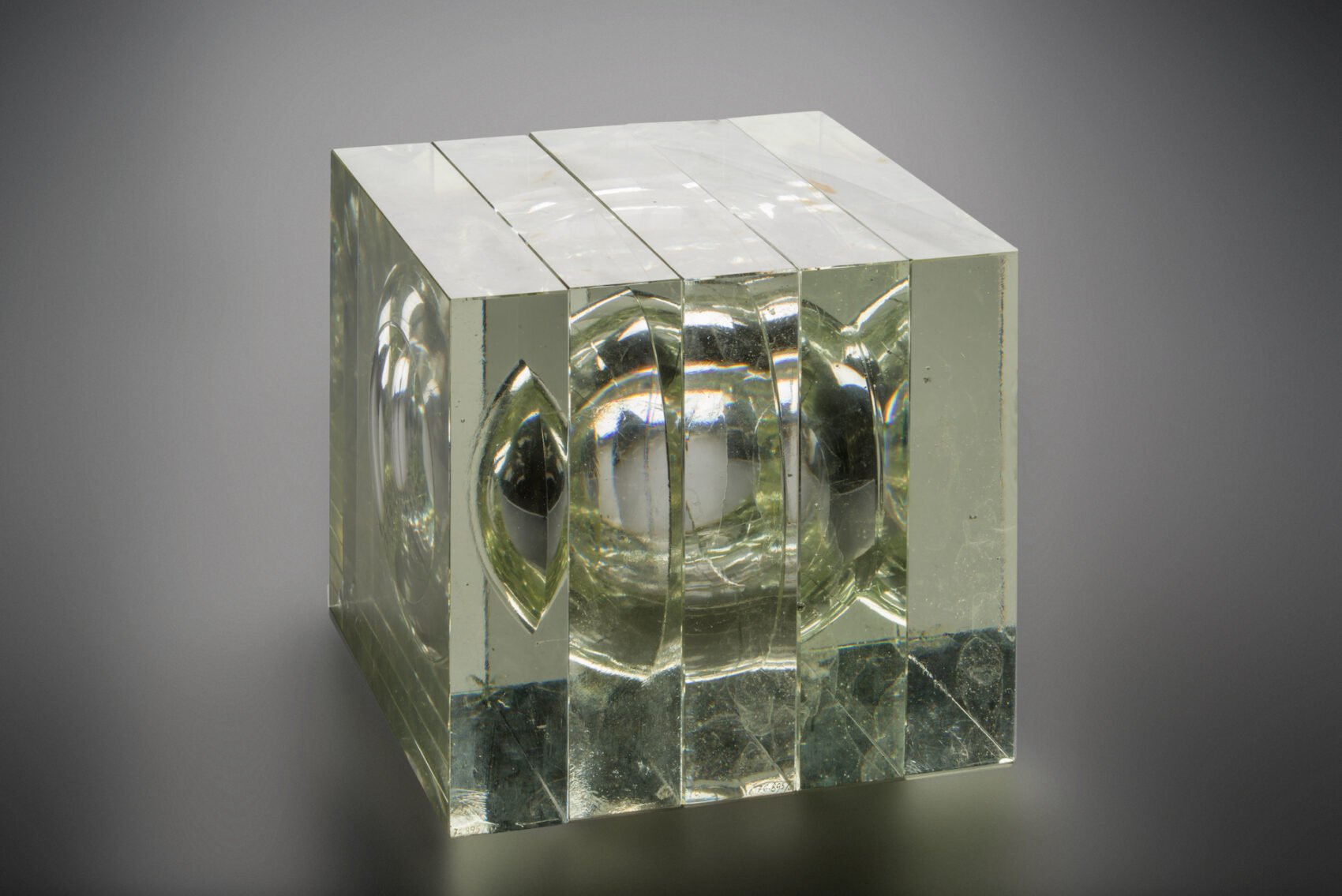
Libenský & Brychtová
The compelling effect and imaginativeness of modern design and architecture would be unthinkable without the creative role of light. The discovery of artificial lighting was of paramount importance that dramatically changed people’s lives especially in the 20th century. Light establishes space, helps to give shape and colour to objects, brings out their texture and volume. In many ways, the play of light even transforms objects. Light can serve to enhance a sense of evanescence, dematerialization and transparency in objects – properties that we so admire in the art of glassmaking and the jewellery craft.
Sphere in a Cube, 1970, Stanislav Libenský (1921–2002) a Jaroslava Brychtová (1924–2020). Made by the artists at the glassworks, Železnobrodské sklo, Železný Brod. Glass, mould-melted and cut
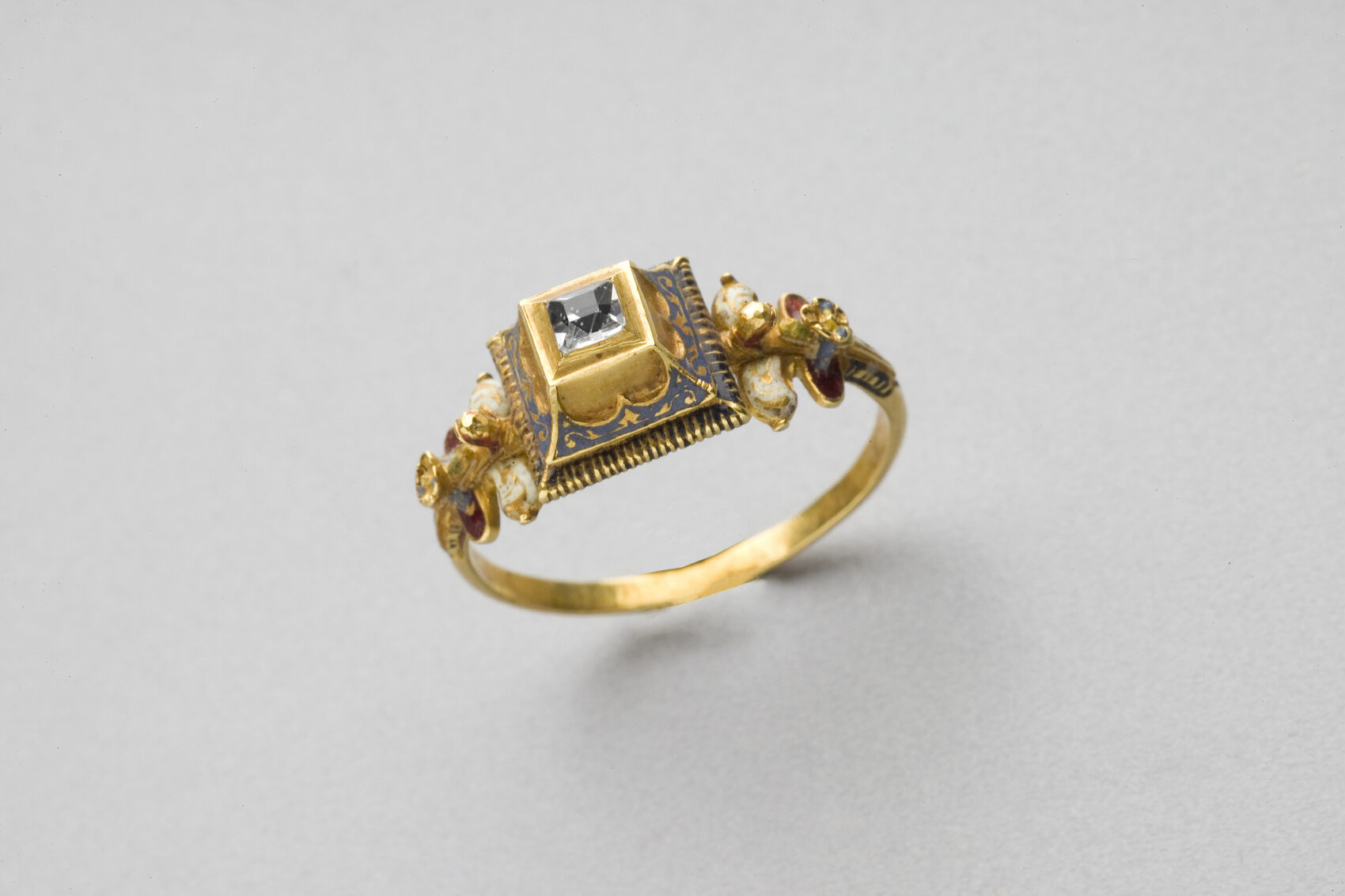
Diamond
In the jewellery craft throughout the centuries, the hardest known mineral, the diamond, is a light-forming element par excellence. Originally, it used to be set in jewellery as an uncut rough crystal, later on as a pointed fragment of a crystal and finally as an intricate form obtained through facet-cutting. Gemstone cutting, particularly the brilliant cut, combines the quality of the natural structure with human intellect. The size reduction of the precious stone is outweighed by the transformation of its optical properties. Refracted light endows the clear material with a range of hues.
Ring, c. 1600. Central Europe. Gold, enamel, diamond
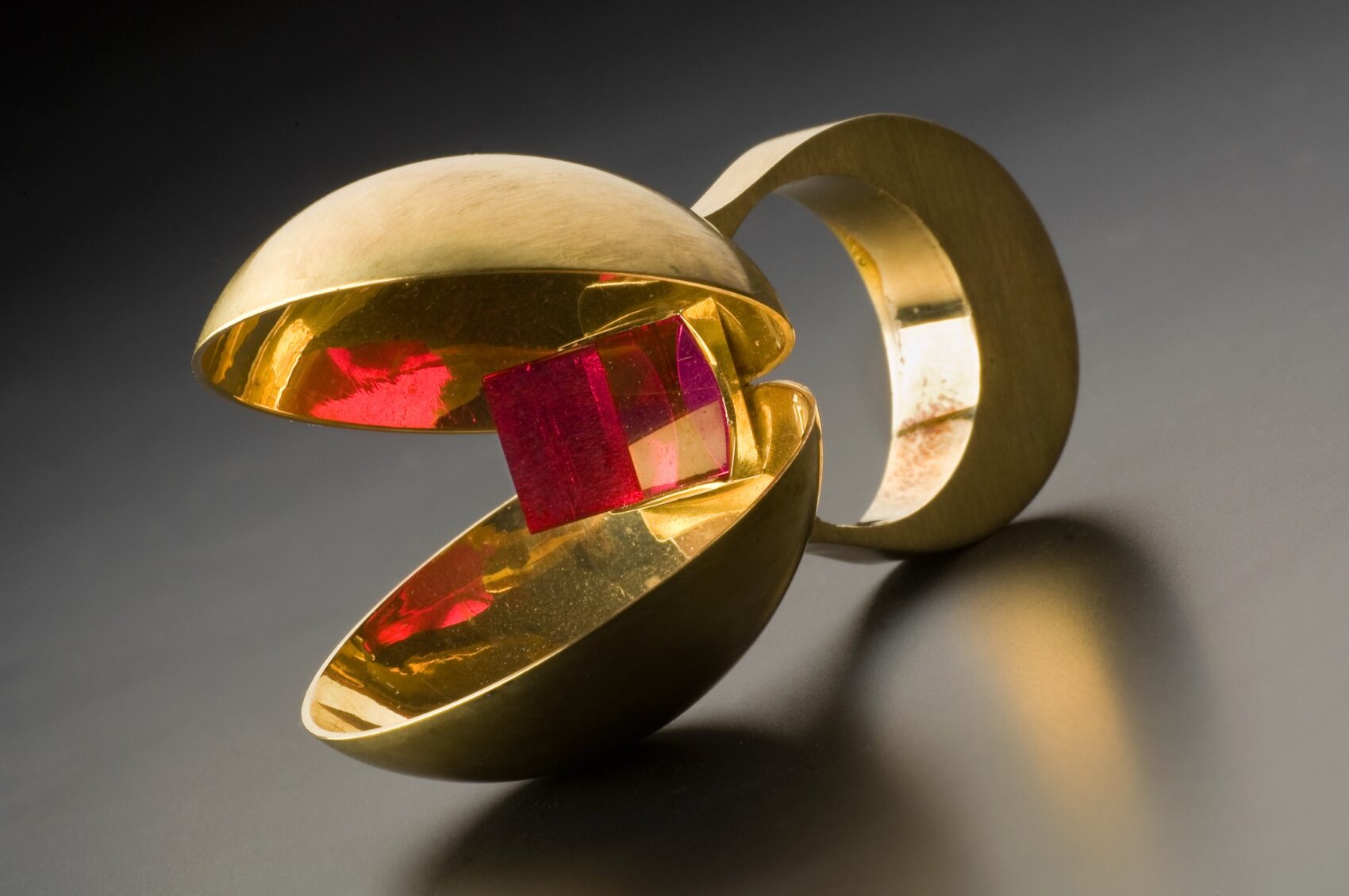
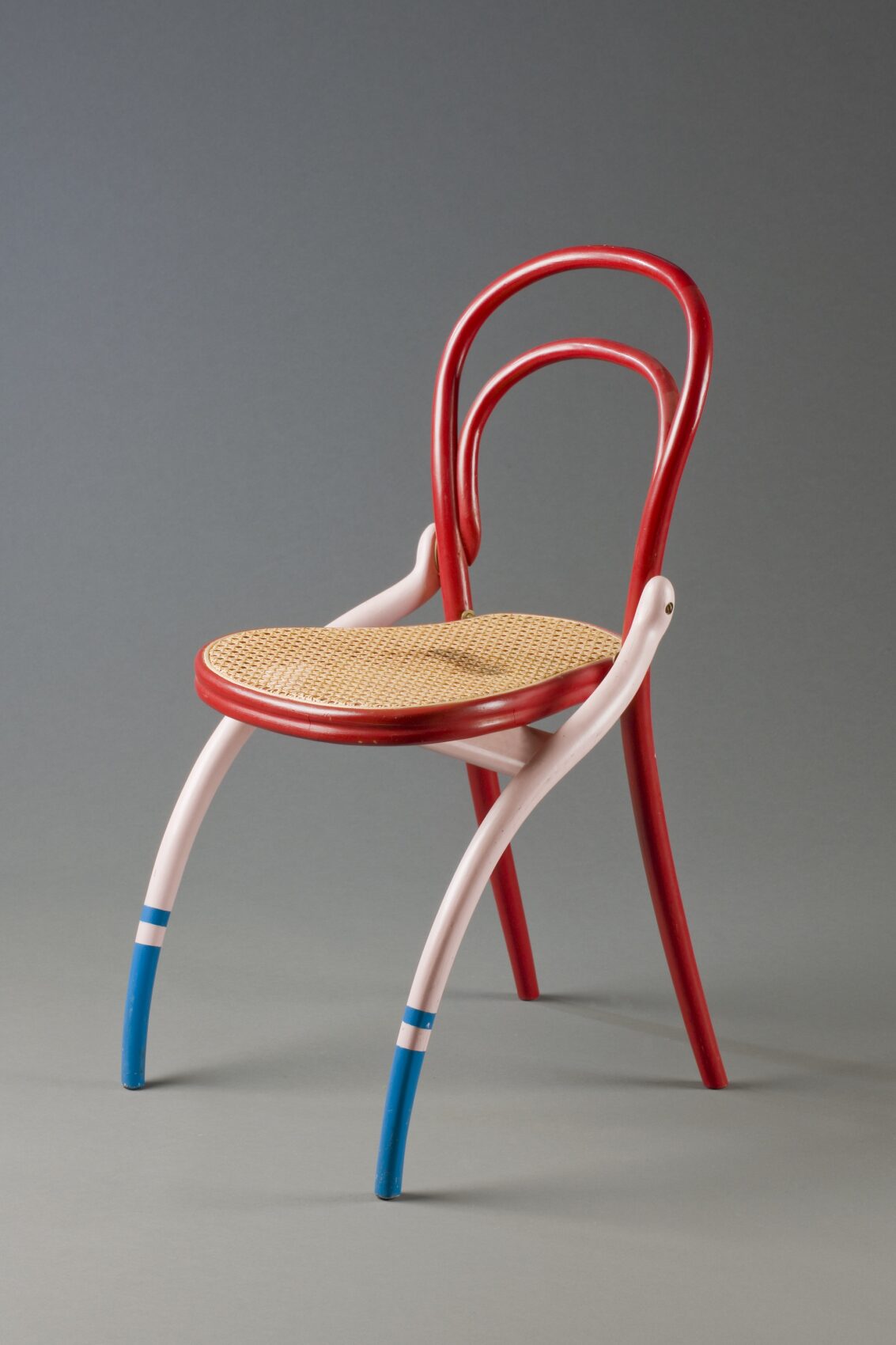
On the Move
Modern humans are destined to be constantly on the move, always on a journey in life. Their existence lacks firm anchorage; it is characterized by never-ending change, a challenge to boundaries, labour and consumption mobility. This aspect of modern life is called “nomadism”. The designer and educator Viktor Papanek (1923–1998) used the term “nomadic furniture” for affordable household furnishings that were generally simple to assemble as DIY (do it yourself) projects. Collapsible chairs and folding armchairs also met the requirements for a flexible modern interior. Their easy transport and spatial economy catered to a dynamic life style, frequent relocation and sojourns of urban inhabitants in the countryside.
Collapsible chair, 1984, Michal Brix (born 1946). Original model Thonet Chair No. 14. Bent beechwood, painted, rattan weave seat